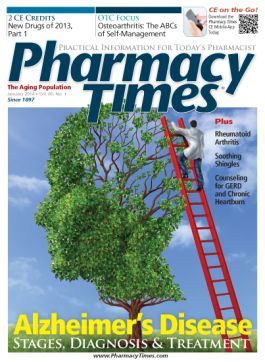Publication
Article
Pharmacy Times
Confusing the Retinoic Acids: Mix-ups Between Tretinoin and ISOtretinoin
Author(s):

A 14-year-old girl diagnosed with acute promyelocytic leukemia (APL) was started on oral tretinoin (all-trans retinoic acid [ATRA]) for induction therapy. APL is a medical emergency with a high rate of mortality, so it is critical to start treatment with tretinoin as soon as the diagnosis is suspected. The patient was hospitalized during induction treatment. She was able to finish the treatment course and achieved complete remission.
The patient was discharged, and the following month, she returned to the outpatient infusion center to begin 10 cycles of intravenous (IV) chemotherapy. Tretinoin was to continue on an outpatient basis, along with IV chemotherapy per protocol. But instead of administering two 14-day cycles of tretinoin as intended, an oncology clinic nurse enrolled the patient and prescriber in the iPledge program and called in a prescription for Claravis (ISOtretinoin [13-cis retinoic acid]; other brands include Amnesteem, Myorisan, and Sotret) to a local pharmacy. The clinic nurse did not realize that tretinoin and ISOtretinoin were not the same medication. She was probably more familiar with ISOtretinoin because it is prescribed more frequently than tretinoin in many pediatric oncology centers.
The pharmacist at the local pharmacy did not have access to the patient’s clinical information, and the physicians continued to use the abbreviation “ATRA” in their office notes, never noting the generic/brand name of the medication on the patient’s profile. Thus, the patient began to take Claravis, not tretinoin, at home.
When the patient was admitted to the hospital again about 4 months later, inpatient chemotherapy orders included tretinoin but requested the use of the patient’s home supply. When an inpatient nurse and pharmacist checked the patient’s supply, they realized it was ISOtretinoin, and not tretinoin as intended.
The patient’s physicians were contacted, and the family was informed of the error. Fortunately, the patient did not experience any reported adverse effects while taking Claravis or lack of disease control while not taking the correct drug. So far, the patient continues to be in remission.
ISOtretinoin can be used in chemotherapy treatment protocols in addition to its use in treating severe recalcitrant nodular acne. The drug has an unlabeled use in children for treating neuroblastoma, with a dosage of 160 mg/m2/day in 2 divided doses. Tretinoin is used almost exclusively for APL. The recommended dosage is 45 mg/m2/day administered as 2 evenly divided doses until complete remission is documented.
Therapy should be discontinued 30 days after achievement of complete remission or after 90 days of treatment, whichever occurs first. Both tretinoin and ISOtretinoin are available in liquid-filled, 10-mg capsules, but ISOtretinoin is also available as 20-, 30-, and 40-mg capsules. Patients receiving ISOtretinoin must be enrolled in the iPledge program, but tretinoin does not require enrollment in any registry.
Bottom line—this type of medication error associated with similar medication names is best prevented during the prescribing process with the use of a well-designed order set for APL, highlighting that tretinoin (and not ISOtretinoin) should be prescribed. Referring to the drug as all-trans retinoic acid rather than tretinoin may also help differentiate it from ISOtretinoin; however, use of the acronym ATRA alone is discouraged.
This error also highlights the importance of requiring the pharmacist filling this prescription to know the patient’s diagnosis and the drug’s clinical indication at the time the prescription is filled.
Dr. Gaunt is a medication safety analyst and the editor of ISMP Medication Safety Alert! Community/Ambulatory Care Edition.







